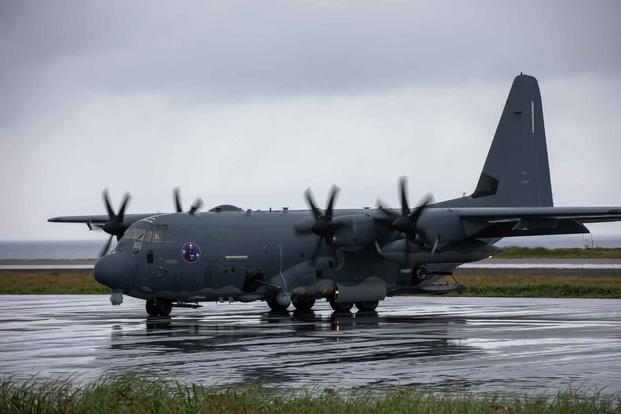An American AC-130 gunship on Monday struck a vehicle in Iraq and killed Iranian-backed fighters who had targeted an air base used by U.S. forces with missiles and a drone, according to the Pentagon.
Al Asad Air Base in western Iraq was attacked by the fighters with close-range ballistic missiles, causing "several non-serious injuries" as well as some damage to infrastructure -- the latest in what have become numerous attacks on troops in the region, Pentagon spokeswoman Sabrina Singh told reporters Tuesday.
"Immediately following the attack, a U.S. military AC-130 aircraft in the area conducted a self-defense strike against an Iranian-backed militia vehicle and the number of Iranian-backed militia personnel involved in this attack," she said.
Read Next: Navy Officially Ends Its 'Up or Out' Policy that Forced Sailors to Advance or Separate
The strike "resulted in some hostile fatalities," Singh said.
The attack on an installation used by the U.S. military in the Middle East is at least the 66th since Oct. 17, and U.S. personnel have suffered at least 62 injuries, according to the Pentagon. Singh noted that the figure does not include any injuries from the most recent attack "as they are still being evaluated."
The high tempo of attacks began in the weeks after the start of Israel's war against Hamas, which resulted in the U.S. deploying two carrier strike groups, a Marine expeditionary unit and additional aircraft to the region to deter a wider conflict. But the Pentagon has continued to claim the attacks on U.S. forces by Iran proxies are not related.
However, over the last few weeks, the Pentagon has put more than 2,000 troops on deployment alert and moved several air defense units and hundreds of other troops into the region in an effort to help increase deterrence and defensive capabilities.
In response to the attacks, the Pentagon has now conducted several planned strikes on weapons and ammunition storage facilities used by Iranian-backed militias in Syria. However, Singh revealed that U.S. forces have also been taking undisclosed but smaller-scale retaliatory actions whenever possible.
"We have had other cases where we have responded in retaliation when we were able to identify the point of origin" of the attack, she said.
Singh said that yesterday's action fell into the category of an unplanned retaliation.
U.S. service members "were able to take action because they saw the militants. They were able to keep an eye on the movement of these militants as they moved into their vehicles," she said.
A defense official said that the base was attacked twice -- once with a one-way attack drone and then with two short-range ballistic missiles.
The use of short-range ballistic missiles was a new development in the attacks since Oct. 17, but it is not a new capability to the area, the defense official said.
The news comes amid questions about whether the U.S. is doing enough to deter the ever-growing attacks on bases in the Middle East. Pentagon officials have repeatedly stressed that they believe their deterrence efforts are working.
Singh pushed back on the idea that U.S. deterrence efforts have failed and, instead, stressed that the Pentagon is "being very deliberate in our strikes and what we target."
"Right now, we are seeing non-serious injuries, minor damage to infrastructure in comparison to weapons facilities being destroyed, a command-and-control center node being leveled, and ... a training facility also destroyed," she said, referring to the earlier planned retaliatory strikes.
"We've been very precise and have inflicted a lot of damage," she added.
-- Konstantin Toropin can be reached at konstantin.toropin@military.com. Follow him on X at @ktoropin.
Related: Iran-Linked Attacks on US Troops Continue Despite Second Airstrike in Syria Meant to Send Message












